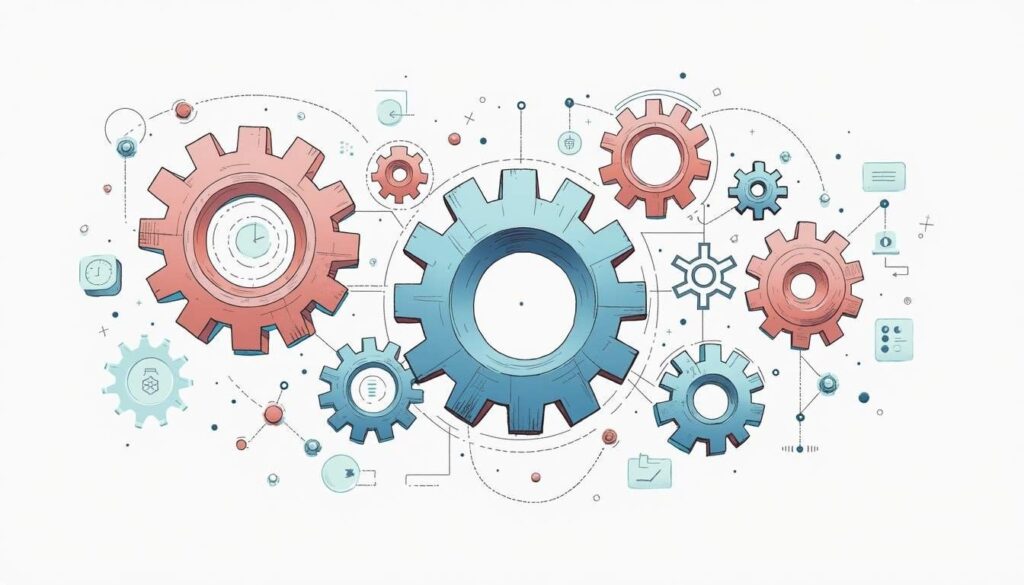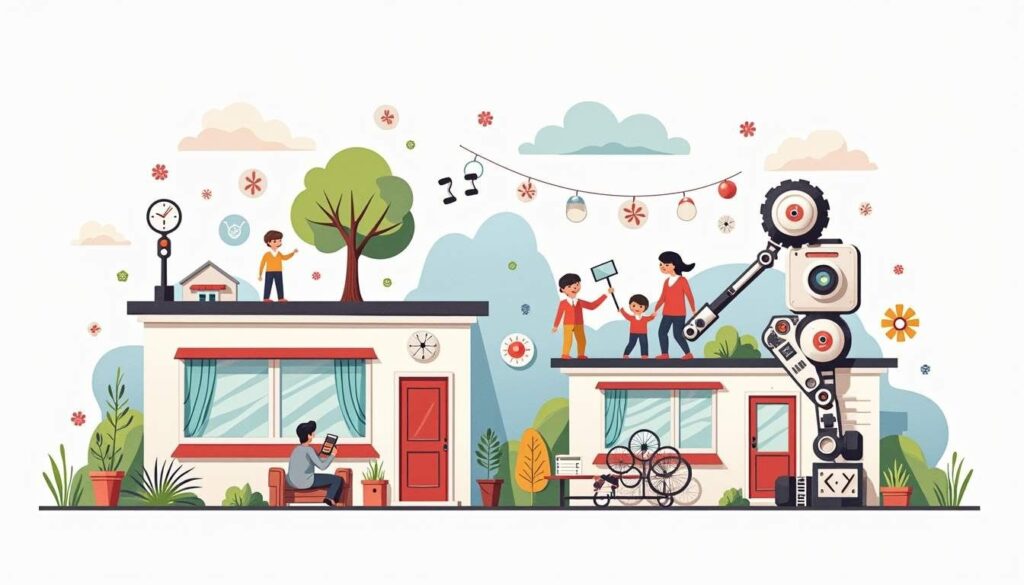In an industry that demands empathy, efficiency, and safety, childcare businesses are increasingly turning towards automation. As the landscape of childcare evolves, automation has become a key strategy for scaling operations, enhancing service delivery, and ensuring compliance with regulatory standards. This article delves into the various aspects of automation specifically tailored for childcare businesses.
Understanding the Concept of Automation in Childcare
Automation encompasses the use of technology to perform tasks that would typically require human intervention. In the context of childcare, it can involve software solutions, tools, and platforms designed to facilitate daily operations.
Automation doesn’t mean replacing human interactions; instead, it aims to free up valuable time for educators and staff, allowing them to focus on nurturing and educating children. Recognizing the specific needs of a childcare environment is essential to effectively implement automation strategies. By understanding the unique dynamics of each childcare facility, providers can tailor automation tools to enhance their specific workflows, ultimately leading to a more enriching experience for the children in their care.
Defining Automation in the Childcare Industry
Automation in the childcare industry refers to various tools and systems that streamline administrative tasks, manage schedules, and enhance communication between parents and staff. It includes everything from digital attendance tracking to financial management software.
Childcare providers can automate routine processes, thereby reducing human error and increasing operational efficiency. By embracing automation, childcare businesses can also stay competitive in a rapidly evolving market. Furthermore, the integration of data analytics into these automated systems allows providers to gain insights into operational trends, enabling them to make informed decisions that can improve service quality and parent satisfaction.
Schedule a free 30-minutes session with us!
The Role of Automation in Modern Childcare
In modern childcare settings, automation plays a crucial role in creating a seamless operational workflow. For instance, online enrollment forms and payment systems reduce administrative burdens significantly.
Additionally, communication platforms enable better engagement with parents, fostering a sense of community and trust. Modern automation tools not only enhance service delivery but also improve the overall experience for both staff and families. For example, automated reminders for parent-teacher meetings or notifications about children’s activities can keep parents informed and involved, thereby strengthening the partnership between home and childcare. Moreover, the use of mobile applications allows parents to receive real-time updates about their child’s day, including photos and developmental milestones, which can greatly enhance their peace of mind and satisfaction with the childcare service.
The Impact of Automation on Childcare Business Operations
Automation can fundamentally transform the operational capabilities of a childcare business. By modernizing outdated processes, it leads to tangible improvements in various areas of operation.

From reducing paperwork to improving tracking and reporting, automation serves as a bridge to streamline processes. This efficiency translates into time and cost savings that can be crucial for scaling the business.
Streamlining Administrative Tasks
Administrative tasks can take up a significant amount of time for childcare providers. Automating these tasks, such as enrollment management, attendance tracking, and billing processes, can help reduce the workload on staff.
With less time spent on paperwork, staff can dedicate more time to caring for and educating children. This not only enhances employee satisfaction but also leads to a more engaged learning environment for the children. Furthermore, automation can facilitate the onboarding process for new staff, providing them with the necessary training materials and schedules in a timely manner, which can significantly reduce the learning curve and enhance team cohesion from the outset.
Enhancing Communication and Engagement
Effective communication is vital in childcare settings, and automation can greatly enhance this aspect. Automated messaging systems can keep parents updated with real-time information about their children, schedules, and events.
This two-way communication fosters trust and transparency, leading to higher levels of parent satisfaction. When parents feel engaged and informed, they are more likely to stay connected with the childcare facility. Additionally, automated surveys and feedback forms can be sent to parents to gather insights on their experiences, allowing childcare providers to continuously improve their services based on direct input from families.
Improving Safety and Compliance Measures
Safety and compliance are non-negotiables in the childcare sector. Automation helps ensure that all safety protocols and regulatory requirements are consistently met. Many software solutions provide alerts and reminders for compliance checks.
By automating safety record-keeping and incident reporting, childcare centers can enhance their response to safety concerns, thus protecting the well-being of the children and maintaining compliance with local and federal regulations. Moreover, automated systems can track staff certifications and training, ensuring that all personnel are up-to-date with the latest safety practices and protocols, which is essential for creating a secure environment for children to thrive.
The Benefits of Automation for Childcare Businesses
Embracing automation presents numerous benefits for childcare businesses that extend beyond operational efficiency. By recognizing these advantages, childcare providers can make informed decisions about their automation strategies.

Increased Efficiency and Productivity
With the implementation of automation, childcare businesses experience a significant boost in efficiency. By automating repetitive tasks, staff are freed to focus on education and care quality, thereby increasing overall productivity.
Additionally, streamlined processes reduce delays, allowing childcare centers to operate more smoothly. This increase in efficiency can lead to more capacity, enabling the center to enroll more children without compromising service quality. For instance, automated attendance tracking ensures accurate records without the need for manual entry, freeing up staff time for more engaging interactions with children. Furthermore, automated scheduling tools can optimize staff shifts based on real-time needs, ensuring that the right number of caregivers is always available to meet the demands of the day.
Schedule a free 30-minutes session with us!
Cost Savings and Financial Management
Automation can also lead to substantial cost savings. By minimizing administrative overhead, childcare providers can allocate resources more effectively. For example, automated billing and payment systems significantly cut down on errors and collections time.
Moreover, investing in automation tools can yield long-term financial benefits as businesses reduce labor costs and improve cash flows, making them more sustainable and scalable in the long run. The initial investment in technology can be offset by the reduction in paper usage and the associated costs of printing and storage. Additionally, automated reporting tools can provide valuable insights into financial performance, allowing childcare providers to make data-driven decisions that enhance profitability and operational effectiveness.
Enhanced Parent Satisfaction and Retention
Ultimately, a satisfied parent is more likely to remain with a childcare provider. Automation boosts parent satisfaction by improving communication, ensuring timely updates, and providing a more organized experience overall.
As parents witness the commitment to quality through automated engagement, their likelihood of referring others to the childcare center also increases. This cycle reinforces a positive reputation, which is vital for growth and expansion. Automated platforms can facilitate regular updates on their child’s progress, including photos and developmental milestones, which fosters a deeper connection between parents and the center. Additionally, surveys and feedback mechanisms can be automated to gather parent insights, allowing childcare providers to adapt their services to better meet the needs and expectations of families, thereby enhancing loyalty and trust in the long term.
Implementing Automation in Your Childcare Business
While the benefits of automation are clear, the implementation process requires careful consideration and planning. Childcare providers should take strategic steps to ensure a successful transition to automated systems.

Identifying Areas for Automation
The first step in implementing automation is to assess current processes and identify areas that can be automated. This may include administrative tasks, communication systems, financial management, or even classroom planning.
By pinpointing specific pain points, providers can focus their automation efforts where they will have the most significant impact, helping to maximize the return on investment. For instance, automating attendance tracking can save significant time for educators, allowing them to dedicate more energy to engaging with children and enhancing their learning experiences. Additionally, automating parent communication through newsletters or updates can foster stronger relationships between caregivers and families, ensuring everyone is on the same page regarding their child’s development.
Choosing the Right Automation Tools
Once areas for automation are identified, selecting the right tools is essential. Researching available platforms and tools, considering factors such as scalability, user interface, and support options, will help inform this decision.
Engaging staff in the selection process can also yield valuable insights and foster buy-in, which is crucial for a smooth implementation. It’s important to consider tools that integrate seamlessly with existing systems to minimize disruption. Furthermore, looking for solutions that offer customizable features can help tailor the automation to the specific needs of the childcare facility, ensuring that the tools enhance rather than complicate daily operations.
Schedule a free 30-minutes session with us!
Training Staff for a Smooth Transition
Finally, providing adequate training for staff is vital to ensure a seamless transition to automated systems. Staff should be familiar with new tools and protocols to avoid disruptions in service delivery.
Ongoing support and training will help staff adapt and embrace automation, ultimately leading to a more effective and productive work environment. Regular workshops and refresher courses can keep staff updated on new features and best practices, creating a culture of continuous improvement. Additionally, establishing a feedback loop where staff can share their experiences and suggestions can lead to further enhancements in the automation process, ensuring that the tools remain relevant and effective in meeting the needs of both the children and the organization.
